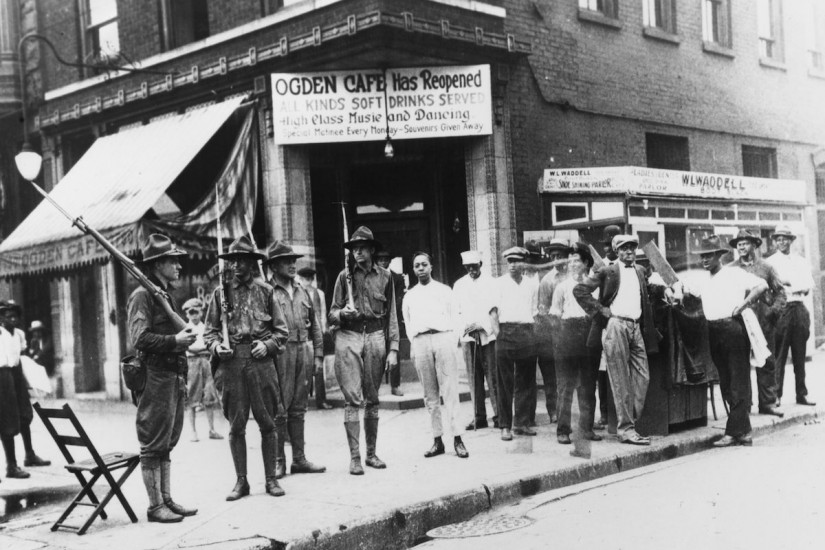Sunday, July 27, 1919, was a hot, sweltering, sunny day at Chicago’s Twenty-Ninth Street Beach. When fourteen-year-old Eugene Williams, who was swimming there that day, drifted across an invisible barrier dividing the black section of the beach from the white, he was stoned by angry whites. His eventual drowning sparked one of the bloodiest race riots of the postwar period.
But unknown to most is a detail that John Harris, who was swimming with Williams, told William Tuttle in an interview fifty years later. Harris revealed that the boys were not headed for the lakefront, but instead, they were eager to reach a place they claimed as their own swimming spot—what they called the “hot and cold.” Located behind the Keeley Brewery and Consumers Ice building, Tuttle informs readers in his book, Race Riot: Chicago in the Red Summer of 1919, that the hot and cold got its name “from the effluence discharged by these companies. The waters of Lake Michigan could be as cold as the melting ice from Consumers, yet the run-off from the vats at the brewery was not only hot but also chemically potent. It could even temporarily turn a black person white.” “It was hot,” Harris recalled, “and Jesus, I would be as white as a white man when I got done—so actually no women or nothing ever come through, so we often didn’t even wear a suit, just take our clothes off and go down to the bank….”
Four days after the attack on Eugene Williams, thirty-eight people were dead (twenty-three African Americans and fifteen whites), 537 were injured, and many others were left homeless. Both the National Association for the Advancement of Colored People (NAACP) and a group of prominent white Chicago citizens appealed to Illinois Governor Frank Lowden demanding that he appoint a committee to study the “psychological, social and economic causes resulting in the riot and make…recommendations to prevent…recurrence.”
Three years later the resulting Commission delivered a 651-page report titled The Negro in Chicago. The Commission organized its study into six areas—racial clashes, housing, industry, crime, public opinion, and racial contacts. The Commission contrasted racial mingling “with the best of feeling” among younger white and black children with “voluntary racial grouping” by older children and adults, which led to “racial disorder” and “serious clashes” (297). It concluded that black transgression and white violence sparked the “race riot,” resulting in open warfare, in some senses, between white and Black people in Chicago. At the source of these tensions were stereotypes about southern African American migrants infected with communicable diseases. Fears of miscegenation also stoked white protectionism and were firmly affixed to boys like Eugene Williams. The Commission’s final recommendations did little to address these fears.
